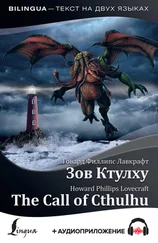We planned to explore a great area in one season. We were operating mostly in the mountain ranges and on the plateau south of Ross Sea [76] Ross Sea – Море Росса
. These were regions explored by Shackleton, Amundsen, Scott, and Byrd [77] Shackleton, Amundsen, Scott, and Byrd – исследователи Антарктиды Шеклтон, Амундсен, Скотт, и Берд.
. We expected to get a quite unprecedented amount of material – especially in the pre-Cambrian [78] pre-Cambrian – докембрийский период, длившийся 4 млрд. лет (самая ранняя часть геологической истории Земли, которая предшествовала кембрийскому периоду (около 540 млн. лет назад)
strata. We wished also to obtain a variety of the upper fossiliferous rocks. The primal life history of this realm of ice and death is of the highest importance to our knowledge of the earth’s past. The Antarctic continent was once temperate and even tropical. We hoped to expand that information about its flora and fauna in variety, accuracy, and detail.
The public knows of the Miskatonic Expedition through our frequent reports to the Arkham Advertiser and Associated Press [79] ArkhamAdvertiser and AssociatedPress – газеты «Аркхэм Адвертайзер» и «Ассошиэйтед Пресс»
, and through the later articles of Pabodie and myself. There were four men from the University – Pabodie, Lake of the biology department [80] Lake of the biology department – Лэйк от кафедры биологии
, Atwood of the physics department [81] Atwood of the physics department – Этвуд от кафедры физики
– also a meteorologist – and myself. I was representing geology and was a nominal leader. There were also sixteen assistants: seven graduate students from Miskatonic and nine skilled mechanics. Of these sixteen, twelve were qualified aeroplane pilots. Most of them were competent wireless operators as well. Eight of them understood navigation with compass and sextant, as did Pabodie, Atwood, and I. In addition, of course, our two ships were fully manned [82] were fully manned – были полностью укомплектованы командами
.
The Nathaniel Derby Pickman Foundation [83] The Nathaniel Derby Pickman Foundation – Фонд Натаниэля Дерби Пикмэна
financed the expedition. The dogs, sledges, machines, camp materials, and unassembled parts of our five planes were delivered in Boston. There our ships were loaded. We were marvelously well-equipped for our specific purposes. As the newspapers told, we sailed from Boston Harbor on September 2nd, 1930. We took a leisurely course down the coast and through the Panama Canal, and stopped at Samoa and Hobart, Tasmania [84] Panama Canal… Samoa and Hobart, Tasmania – Панамский канал… Самоа и Хобарт, Тасмания.
. There we got final supplies. Our ship captains were J. B. Douglas [85] J. B. Douglas – Дж. Б. Дуглас
, commanding the brig Arkham , and Georg Thorfinnssen [86] Georg Thorfinnssen – Георг Торфинсен
, commanding the Miskatonic . They both were veteran whalers in Antarctic waters.
At about 62° South Latitude we noticed our first icebergs. These were table-like objects with vertical sides. Just before reaching the Antarctic circle [87] the Antarctic circle – Южный полярный круг
, which we crossed on October 20th with appropriately ceremonies, field ice [88] field ice – лед, плавающий в воде, айсберги
considerably troubled us. The falling temperature bothered me considerably after our long voyage through the tropics. Very often the curious atmospheric effects enchanted me vastly. Distant bergs became the battlements of unimaginable cosmic castles.
We were pushing through the ice. Finally, we regained open water at South Latitude 67°, East Longitude 175°. On the morning of October 26th, a snow-clad mountain chain appeared on the south. That was an outpost of the great unknown continent and its cryptic world of frozen death. These peaks were obviously the Admiralty Range discovered by Ross [89] the Admiralty Range discovered by Ross – горы Адмиралтейства, открытые Россом
. Our task was to round Cape Adare [90] Cape Adare – мыс Адэр
and sail down the east coast of Victoria Land [91] Victoria Land – земля Виктории (регион Антарктиды)
to our base on the shore of McMurdo Sound [92] McMurdo Sound – покрытый льдом пролив Мак-Мердо в Антарктиде, отправная точка экспедиции Скотта
, at the foot of the volcano Erebus in South Latitude 77° 9’.
The last part of the voyage was vivid and fancy-stirring. Great barren peaks of mystery, white snow, bluish ice and water lanes, and black bits of exposed granite slope. Something about the scene reminded me of the strange and disturbing Asian paintings of Nicholas Roerich [93] Nicholas Roerich – Николай Рерих (1874–1947) русский художник, философ-мистик, путешественник и общественный деятель. Провел ряд экспедиций в Азию, вдохновивших его на множество картин.
, and of the disturbing descriptions of the evil plateau of Leng [94] the evil plateau of Leng – зловещее плато Ленг (вымышленное)
. These descriptions appear in the dreaded Necronomicon of the mad Arab Abdul Alhazred [95] the dreaded Necronomicon of the mad Arab Abdul Alhazred – ужасный Некрономикон безумного араба Абдула Альхазреда (придуманная Лавкрафтом книга, не существовавшая в реальности, но на которую он и писатели его круга регулярно ссылались)
. I was rather sorry, later on, that I looked into that monstrous book at the college library.
On the 7th of November, we passed Franklin Island [96] Franklin Island – остров Франклина, небольшой остров в море Росса. Населен пингвинами.
. The next day the cones of Mts. Erebus and Terror on Ross Island [97] Mts. Erebus and Terror on Ross Island – горы Эребус и Террор на острове Росса в Антарктиде, названные в честь кораблей экспедиции Дж. Кл. Росса
appeared, with the long line of the Parry Mountains [98] Parry Mountains – горы Перри(обычно выделяют одну гору Перри в горах Стрибога)
beyond. There was a white line of the great ice barrier. It was rising perpendicularly to a height of two hundred feet like the rocky cliffs of Quebec. It marked the end of southward navigation. In the afternoon we entered McMurdo Sound and stood off the coast near the Mt. Erebus. Beyond it rose the white, ghostlike height of Mt. Terror, ten thousand, nine hundred feet in altitude.
Читать дальше






